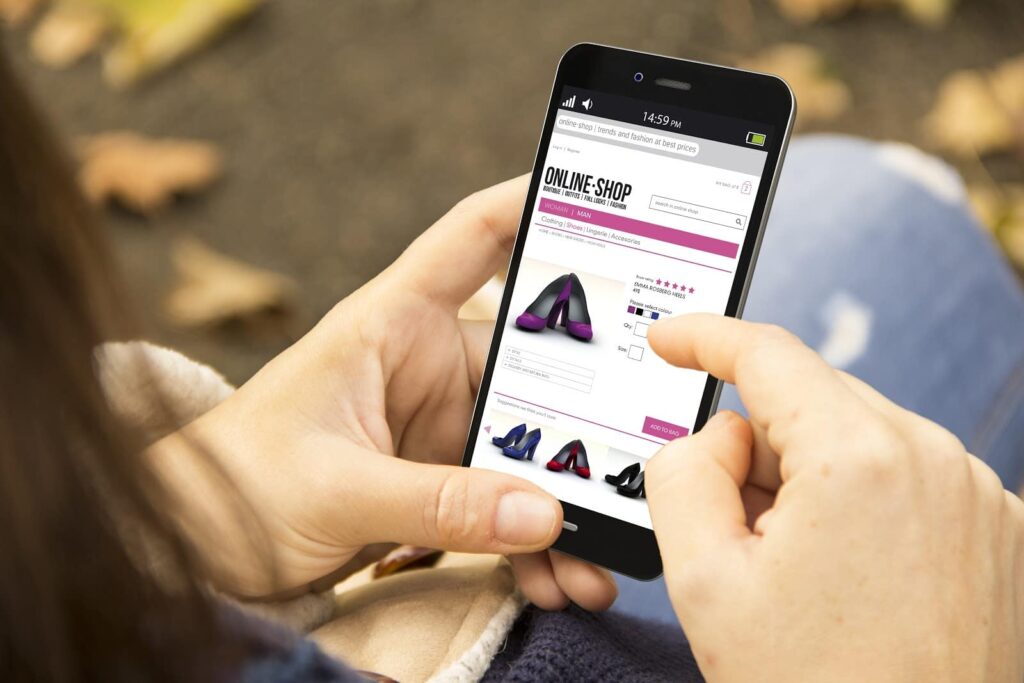The need for a strong mobile app marketing strategy resonates truer now more than ever. Mobile eCommerce apps have seen some ups and downs in the past few years as they continue to grow and become adopted by retailers, but early 2020 statistics proved promising:
- 72% of marketers were found to be using mobile apps, up 34% from 2018.
- 38% of consumers listed mobile apps among their preferred ways to communicate with companies, and that figure rose to 56% among millennials and Gen Z.
- 42% of marketers reported a 20% increase in mobile app sales in 2019.
Then, in March 2020, as COVID-19 brought a whole new meaning to the phrase “retail apocalypse,” app install rates fell by 12% per week, and premium app installations decreased by 35%. Fortunately, that trend has reversed itself as the world adjusts to new commerce realities, with apps being at the forefront of a winning strategy. There are many advantages to utilizing apps for customer engagement, and a recent survey found that 67% of customers said the way a company uses technology is an indicator of how it generally operates.
A Well-Rounded Mobile App Marketing Strategy
Consumer behavior has been changing rapidly since the pandemic began. It’s doubtful that it has reached a stasis yet, but it is worth considering the possibility that the uptick in digital commerce will prevail. With that in mind, now’s the time to fortify your mobile app marketing strategy. Here are four key tips for doing so:
1. Know Your Customers and Their Needs
An eCommerce app has a lot of moving parts, all of which need to be working harmoniously. The app needs to have a simple yet compelling user interface that is easy for customers to use. An overview of leading eCommerce apps showcases how different each are from the rest, and yet they are all successful. How can this be? Each app was created to not only cater to the specific market each retailer operates in, but also to their customers’ needs, preferences, and expectations.
2. Keep Your App Current
The content and visuals of an app have to be current and meet users’ expectations. The app has to load fast, have the latest product catalog, and reflect current technological advancements. Panera Bread recently added curbside pickup to its MyPanera app. As of mid-May 2020, eCommerce accounted for 65% of its revenue.
Also, the use of video has been increasing steadily, from 26% of total advertising in December 2017 to 63% two years later. It can be an effective way to maintain engagement while access to stores is limited. For example, Nike has added workout coaching to its app, and has recently made the formerly premium NTC app free. Currently, digital accounts for 12% of the company’s sales, and 51% of its growth.
3. Test Your App’s Performance and Track Key Metrics
 It’s important to regularly test and track the performance of your app. Some of the KPIs to pay special attention to include:
It’s important to regularly test and track the performance of your app. Some of the KPIs to pay special attention to include:
- Active users, across a variety of timespans
- Retention rate, across a variety of timespans
- Use of features
- Download sources
- Time spent in-app
- Customer Lifetime Value (CLV)
These data reveal a lot about the level of customer engagement and can highlight areas needing improvement. Testing and tracking can divulge how an app is being used, and whether a different approach may be more beneficial. Reviews can pinpoint trouble areas, and may contain valuable suggestions for improvement or new features. A/B testing is also a valuable tool for app optimization.
4. Promote Your App Competitively
Visibility is critical to your app’s success. App store optimization is as important as search engine optimization for blogs. Awareness of your competitors’ strategies is useful as well. A paid ad on searches for competitors’ apps can be profitable, as those searches are highly focused and show a high degree of intent. You can also partner with a complementary brand in a brand alliance strategy. Finally, users are more likely to engage with your app if they are incentivized to do so, usually in the form of gamification or rewards.
Partner With a Third-Party App for Greater Impact
Mobile marketing takes time, strategy, and skill. An effective way to benefit from the advantages of a mobile app is to leverage the resources and expertise of a third-party app like Shopkick.
Shopkick is a highly gamified, rewards-based app used by major brands and retailers to engage shoppers at-home, in-store, and online. It can be used in conjunction with your proprietary app, to complement other leading shopping apps, or on its own.
Shopkick has been a powerful tool in augmenting retailers’ existing mobile app marketing strategies, helping them to reach both new and existing customers.
The app incentivizes your native audience and strengthens their brand loyalty, while also strongly magnifying your brand exposure with a large and diverse audience of new users.
Shopkick successfully boosts brand awareness, customer engagement, and sales by incentivizing users with points (“kicks”) wherever and whenever shoppers are on their mobile devices. Kicks can be earned for browsing branded lookbook or video content, scanning product barcodes at-shelf, and making purchases. And because Shopkick uses rewards instead of discounts unlike other shopping apps, there’s no need to worry about diluting margins.
Shopkick can greatly benefit your mobile app marketing strategy and help strengthen its scope and efficacy. To learn more about our features and how we have used them to help our partners find success, contact Shopkick today.
Image courtesy of McLittle Stock
Get In Touch





